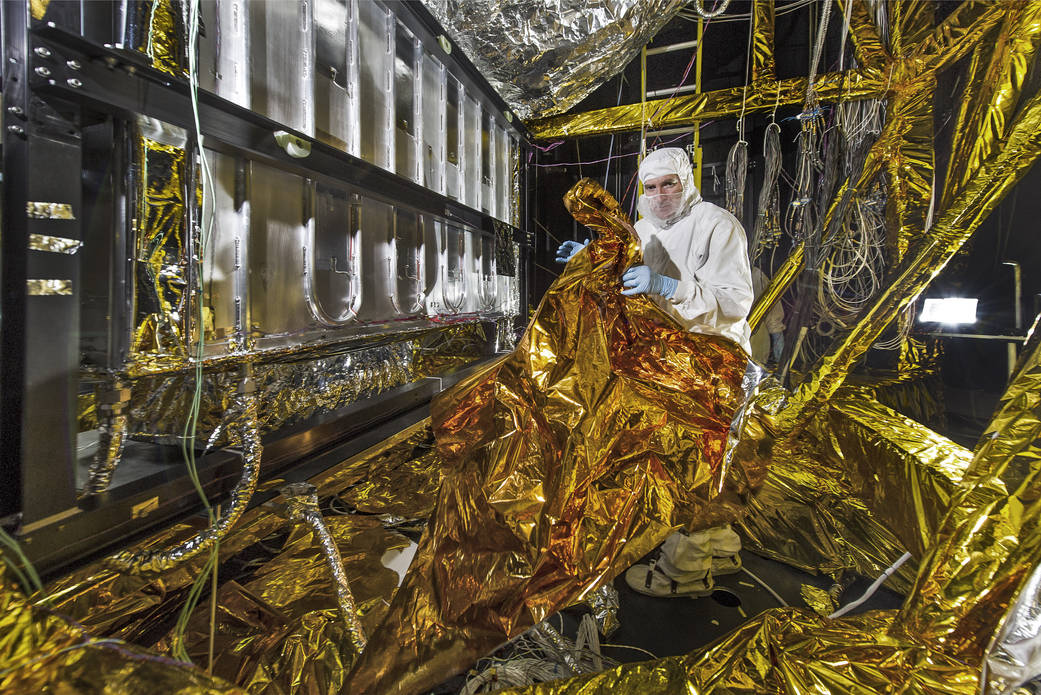
In this photo, Ed Shade, an Engineer at NASA’s Goddard Space Flight Center in Greenbelt, Md. is putting final touches on thermal blankets in a vacuum chamber called the Space Environment Simulator, or SES that is being used to test components of NASA’s James Webb Space Telescope.
Shade is laying blanketing on the wires on the floor to keep the heat they create from contaminating the other parts of the testbed. Those blankets are made of aluminized kapton, a polymer film that remains stable over a wide range of temperatures. Just as blankets insulate people from cold, these golden-colored thermal blankets help prevent heat from seeping into the vacuum chamber that will drop temperatures to mimic those of deep space.
Blankets are also wrapped around pieces of equipment to protect them when they go into the SES. Components of the Webb will ultimately experience the cold of space in their operational orbit over 1 million miles from Earth and are tested in a deep freeze to ensure they will function properly.
The cables and cords seen in the photo are actually ground support equipment that include the Optical Telescope Simulator (OSIM), for the James Webb Space Telescope. The cables and cords are part of the thermal controls and monitoring that will go on 24 hours a day for the next three months. The entire structure is monitored for thermal fluctuations.
The most powerful space telescope ever built, Webb is the successor to NASA’s Hubble Space Telescope. Webb’s four instruments will reveal how the universe evolved from the Big Bang to the formation of our solar system. Webb is a joint project of NASA, the European Space Agency and the Canadian Space Agency. Image credit: NASA/Chris Gunn
Rob Gutro
NASA’s Goddard Space Flight Center

























